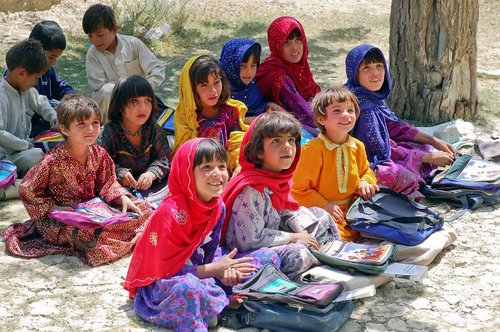In the article below, writer Ms. Vicki Garlock of The Interfaith Observer envisions a path toward improving interfaith results, accomplishments, and effectiveness recommending engagement with children, and offering observations about how children are in the world as a resource to guide our interfaith mindset. Perhaps inadvertently, or by habit, Ms. Garlock reverts quickly to a list of commonalities among us in our faith traditions that do not necessarily arise from observing the behavior of children. This non-children derived list is a good one, but it seems something is needed to weave her gentle and insightful thoughts together into a more seamless essay.
IRFWP thanks Ms. Garlock, and all at TIO for these important and uplifting thoughts, and we pray together for peace and cooperative world. (IRFWP ed.)
The interfaith movement is all about bringing people together. Most of the time we focus on adults and social justice issues. Don’t get me wrong. I fully support any and all interfaith efforts. But we need to do more, and we need to do it better. That’s why, when I reimagine interfaith, I see the world’s children. I see open minds, friendly hearts, and playful attitudes. I see eyes full of hope and love. I see a future generation of adults that recognizes the value of all faith traditions – a generation that has moved beyond mere tolerance toward deep appreciation. I see a path forward.
There is certainly a role for adults in this scenario. Grown-ups have the means to bring kids of different faiths together. Adults can also facilitate meaningful dialogue and help hold the space for differing worldviews. But adults need to avoid handing down their fears and insecurities to the next generation. The Earth gets smaller by the day, our interconnectedness increasingly apparent. To thrive in this emerging world, kids need to know something about the basic faith practices and beliefs of others, for the health of our planet and the well-being of our species.
Being More Alike than Different
Interestingly, when adults engage in multifaith dialogue, a near-universal refrain emerges: “I realized we are more alike than different.” In my experience, this sentiment is even more common in kids. Kids around the world like to do the same things! They like to play, listen to stories, create things, eat special food, celebrate special occasions, be part of a community, and have fun. All of these can and do happen in multi-faith settings, especially when kids are involved.
Stepping Back
If we take a step back, we can begin to see fundamental similarities: we’re all attempting to articulate the ineffable, we all celebrate important dates in our history, we all have revered writings or oral narratives that guide us, and we all have special ceremonies that help us to embody our beliefs. There are even commonalities across major themes and teachings: being kind to one another, helping those in need, welcoming the stranger, appreciating the wonders of the world around us, and recognizing the miraculous essence of connecting with the Sacred.

